Nilsson
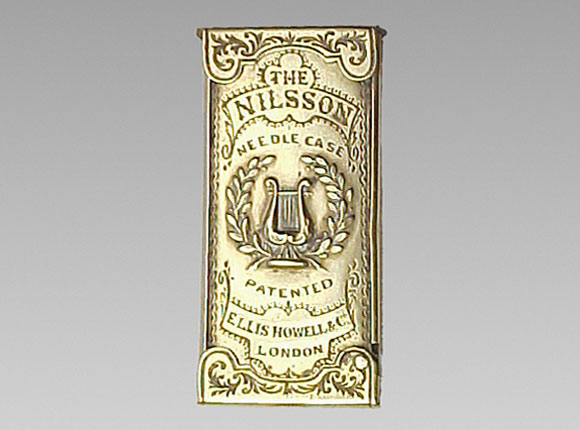
Needle Case (photograph from eBay)
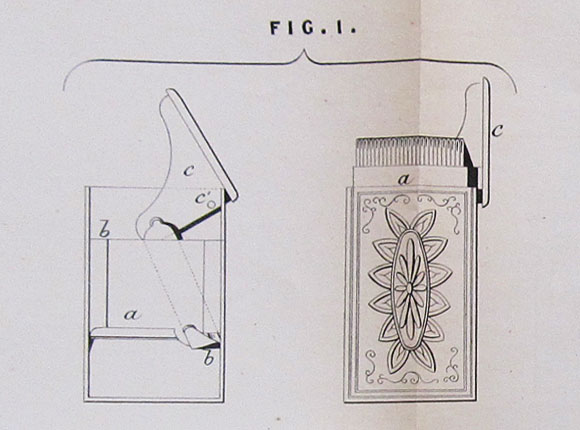
UK Patent 1869-2998 drawing
Design Details
Needle Case Type: |
Demi-Quad |
Patent/Registered to: |
William Avery, Redditch Manufacturer and Albert Fenton of the same place, Machinist |
Patent/Design Representation #: |
Mechanical Patent: #2998 |
Patent/Design Registration Date: |
October 14, 1869 |
Location of Patent/Design Registration: |
British Library - Business and Intellectual Property Centre – London |
Reference #: |
1869-2998, Figure 1 |
Dimensions: |
2.2 x 4.6 |
Material: |
Brass |
Name Variations: |
Ellis, Howell & Co - London |
Other Variations: |
See other Demi-Quads |
US Patent |
US 1870-102471 |
Facts
The Nilsson was almost certainly named in honour of celebrated Swedish born diva Christina Nilsson. A soprano, Christina who often signed
her name Christine, was acclaimed for her mastery of the bel canto technique. She sang in the opera houses of London, Paris, New York, St.
Petersburg and Vienna and was showered with gift of jewellery from the crown heads of Europe though it is said her most prized awards were the gold
laurel leaf wreaths given to her by her adoring public.
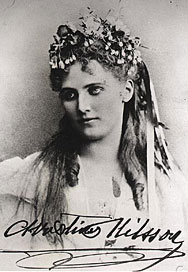
History
Born Kristina Jonasdotter in the small village Vederslöv, outside Växjö in Kronoberg, Småland, Sweden on 20th August 1843, she was the youngest
daughter of Jonas Nilsson and Kristina Katarina Månsdotter. From a musical family, Kristina sang and played violin performing at fairs and
inns to earn money. Her talent was noticed by a local district judge who arranged for her to become a protégé of Baroness Adelaide
Valerius-Leuhusen who was herself an accomplished Swedish singer and artist living in Gothenburg. Her education included singing and languages
and at the age of 17 she was taken to Paris to further her voice training. After studying for 4 years, Kristina who now called herself
Christina Nilsson, made her debut in 1864 as Violetta in La Traviata at the Theatre Lyrique. Twice married, she retired from singing in 1888
when aged 45 and still at the height of her career and ability. Christina died in Växjö in 1921.
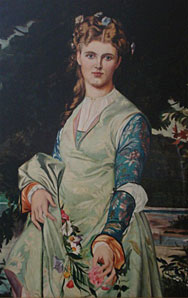
Miscellaneous
It has been claimed that Gaston Leroux drew heavily on the real life Christina Nilsson’s story for his inspiration for fictional character
Christine Daaé in his 1910 novel The Phantom of the Opera. The similarities are remarkable in that he writes of Christine who is born in
Sweden, losing her mother when she is very young then travelling with her father to fairs where she sings accompanied by her father on the
violin. She is discovered at one of these fairs by a Professor Valérius. He provides for Christine’s education, taking them to Gothenburg
and later to Paris. Below is a painting of Pandora for which Nilsson was the model.
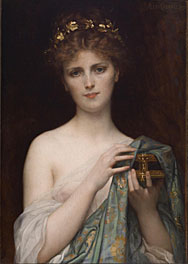
Note: Right side panel text and photos provided by Lynda Herrod.









